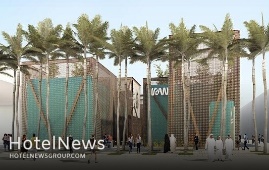
According to the Hotel News, The Association of Iranian Travel Agencies has invited domestic travel businesses to attend Iran pavilion at Expo 2020 Dubai, which is currently underway in UAE. Association of Iranian Travel Agencies Director Hormatollah Rafiei has called on [eligible] travel agencies to grasp “this golden opportunity” by attending the event in a space provided to tourism activists for free, Mehr reported on Tuesday. Visitors to the pavilion are offered to discover epitomes of the ancient land in terms of rituals, handicrafts, cultural heritage, and travel destinations. It also reveals more about medical tourism, novel startups, and off-the-beaten tracks. Many countries and companies are also looking to the expo - the first major global event open to visitors since the coronavirus pandemic - to boost trade and investment. According to organizers, the Expo, an exhibition of culture, technology, and architecture under the banner “Connecting Minds and Creating the Future”, is expected to be a demonstration of ingenuity, and a place where global challenges such as climate change, conflict, and economic growth can be addressed together. The Persian Gulf state has relaxed most coronavirus limitations but Expo requires face masks to be worn and for visitors over 18 to be vaccinated against, or test negative for, COVID-19. Iran expects to reap a bonanza from its numerous tourist spots such as bazaars, museums, mosques, bridges, bathhouses, madrasas, mausoleums, churches, towers, and mansions, of which 26 are inscribed on the UNESCO World Heritage list.
Create: Oct 20, 2021 Edit: Oct 20, 2021 Regional News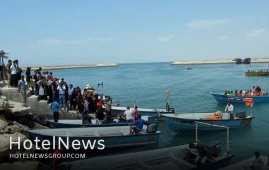
Bushehr province should invest a great deal of effort to develop its maritime tourism, the deputy tourism minister Ali-Asghar Shalbafian has said. TEHRAN - Busher province should invest a great deal of effort to develop its maritime tourism, the deputy tourism minister Ali-Asghar Shalbafian has said. “If the southwestern Bushehr province wants to develop tourism, it should focus on maritime sector,” the official said on Thursday. “The province needs to inform investors about its capacity in this sector, especially its favorable location on the Persian Gulf coast.” He made the remarks during a meeting with the provincial tourism chief Mohammad Hossein Arastuzadeh. The coastal region, ports, islands and coasts of the Persian Gulf are among Bushehr's greatest natural gifts, therefore, directing the investment capacities and enthusiastic investors to the maritime tourism sector will facilitate the growth of Bushehr as a coastal tourist destination, Shalbafian explained. For his part Arastuzadeh said that by using cruise ships and traditional Lenj boats in the region, maritime tourism has grown. Over the past couple of years, the Islamic Republic has made various efforts to exploit maritime tourism potential by developing hospitality infrastructures, diversifying sea routes, and drawing private sector investors along its vast southern coasts. Prosperous maritime tourism could help the county to meet its ambitious target of attracting 20 million annual tourists by 2025. It also keeps an eye on tourism developments in the Caspian Sea in the north. Back in February, the Ministry of Tourism and the Ministry of Transport and Urban Development signed a memorandum of understanding (MOU) to develop maritime tourism and make the best use of its potential in the southern and northern coasts of the country. Promoting the culture of using the sea as a tool to increase social vitality, development of coastal activities in the form of environmentally-friendly plans and programs, and creating the necessary grounds for cooperation and exchange of knowledge and information were also among the topics of the agreement. With over 6,000 years of history and significant monuments from the Elamite, Achaemenid, Parthian, and Sassanid eras, Bushehr is one of Iran’s most important historical centers. Besides its cultural heritage, beautiful beaches and lush palm groves make it an attractive destination for world travelers. The historical and architectural monuments of Bushehr include Islamic buildings like mosques and praying centers, mansions, old towers, castles, as well as gardens. When it comes to cultural attractions, there are many historical mounds in Bushehr including Tall-e Khandaq with Sassanid architectural style, Tall-e Marv located near an Achaemenid Palace, and Qajar era Malek al-Tojar Mansion. Qajar era Kazeruni Mansion, which has been inscribed on the World Heritage List, is another attraction that world travelers love to see among various ancient sites.
Create: Oct 16, 2021 Edit: Oct 16, 2021 Regional News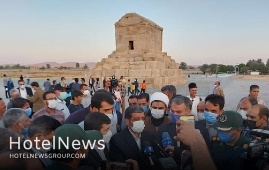
The UNESCO-registered Pasargadae is a symbol of human civilization in ancient Iran, tourism minister Ezzatollah Zarghami has announced.There is no doubt that Pasargadae belongs to Cyrus the Great, who is regarded as a legend in the world, whether or not he was buried here, it is important to respect him as an Iranian, the minister said on Thursday. He made the remarks during a visit to the majestic World Heritage site, which is situated in the southern Fars province. “Pasargadae stands out for its uniqueness on the international stage, if not as a special place, but as a symbol of civil and human development,” he noted. The tourism status of Pasargadae was among issues discussed with President Ebrahim Raisi during his current visit to Fars…., and funds have been considered for it, the minister added. He also noted that the majority of funds will be allocated to develop infrastructure and facilities, and making repairs for the public benefit, he said. There has already been an allocation of 200 billion rials ($4.7 million at the official exchange rate of 42,000 rials per dollar) to the historical site, he mentioned. Situated about 50 km north of Persepolis, Pasargadae embraces outstanding examples of the first phase of royal Achaemenid art and architecture and exceptional testimonies of Persian civilization. Cyrus was the founder of the Achaemenid Empire which at its greatest extent stretched from the Balkans to the Indus Valley, spanning 5.5 million square kilometers. The Persian king declared the world’s first charter of human rights, also known as the Cyrus Cylinder. Despite the minimal nature of the ruins, they make a good introduction to the wonders of Persepolis, some 60km to the south. Best visited en route from Yazd or Isfahan to Shiraz, most people fit them into an extended tour from Persepolis with stops at Naqsh-e Rostam and Naqsh-e Rajab.
Create: Oct 16, 2021 Edit: Oct 16, 2021 Regional News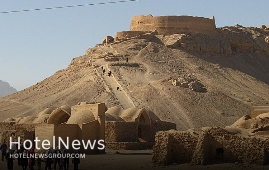
The enigmatic Zoroastrian Towers of Silence are set on two lonely, barren hilltops on the southern outskirts of Yazd in central Iran. According to a tradition dating back over 3,000 years, dead bodies were left on top of those open towers – which are also called dakhmas -- to be slowly disengaged or picked apart by desert vultures. Under ancient Zoroastrian beliefs about the purity of the Earth, dead bodies were not buried but left in these uncovered stone towers so that vultures could pick the bones clean. Narratives say that men’s corpses were placed in the outer circle, while women’s were left in the middle, and children in the inner-most ring. Bodies were then left until their bones were bleached by the elements and stripped by the vultures. After the process of purification, bones were placed in ossuaries near, or inside the towers. Ossuaries from these rituals have been discovered from the 4th and 5th centuries BC. At the foot of the hills are several other abandoned Zoroastrian buildings, including a defunct well, cistern, kitchen, and a lavatory. As Iran developed and urbanized, dakhmas became increasingly closer to city limits, severely curtailing their use. Since the 1970s, the use of dakhmas has been illegal in Iran, forcing orthodox Zoroastrians to adapt to new burial methods. According to Encyclopedia Britannica, such towers are about 25 feet (8 m) high, built of brick or stone, and contain gratings on which the corpses are exposed. After vultures have picked the bones clean, they fall into a pit below, thereby fulfilling the injunction that a corpse must not suffer contact with either fire or earth. Zoroastrian Towers of Silence are currently one of the famed travel destinations of Yazd, which is a cradle of Zoroastrianism. In July 2017, the historical texture of the city of Yazd was named a UNESCO World Heritage. Wedged between the northern Dasht-e Kavir and the southern Dasht-e Lut on a flat plain, the oasis city enjoys a very harmonious public-religious architecture that dates from different eras. With its winding lanes, a forest of badgirs (wind catchers), mud-brick houses, atmospheric alleyways, and centuries of history, Yazd is a delightful place to stay, referring to as a ‘don't miss’ destination by almost all travel associates in the region. Yazd Jameh Mosque, Dowlatabad Garden, the Yazd Atash Behram, also known as Atashkadeh-e Yazd, Towers of Silence, and adjacent desert landscape are among its tourist sites. Here is a selection of comments that visitors to the Zoroastrian Towers of Silence have posted to TripAdvisor, one of the most popular travel websites in the world: ‘Wonderful’ Should be visited to understand the ancient beliefs of Zoroastrians... This is a place where are the Zoroastrians buried their dead in the sky... (Fatih U from Izmir, Turkey) ‘Eerie’ A must site to visit if you are in Yazd to check out how the Zoroastrians dispose of their dead as they believed that after death the soulless body is impure and by burying the impure corpse in the ground, the soil becomes contaminated with impurity. (shadgerami from Nikolayevsk-on-Amur, Russia) ‘An extraordinary site’ We had planned to visit a dakhma when we toured Uzbekistan but had to give it a miss, so I was eager to visit these in Yazd. I had not realized that buildings are having a ritual function associated with the dakhma. Each family has its own building where a final funerary meal is eaten before the deceased is taken to the dakhma for excarnation. It was fascinating to walk around that part of the site before ascending the dakhma. The ascent is quite steep but aided by proper steps. Once in the main platform, there are excellent information boards in English explaining the processes undertaken. (Rod F from Royal Wootton Bassett, UK) ‘Spookily beautiful’ It is one of the most interesting sites we visited on our trip to Iran and one of the greatest reasons to add Yazd to the tour program. Totally recommended! (Muge S from Istanbul, Turkey) ‘A unique place to visit’ I can imagine how hot it must be here in the summer... we visited Yazd at Christmas time and the weather was perfect, sunny but not too hot. Climbing up to the hill makes you sweat but standing right where the corpses were left is a unique experience that catches one’s imagination. There are helpful postings in English that help you understand the context and the customs. You really can’t miss this if you visit Yazd. (Joscar00 from Stockholm, Sweden) ‘Interesting history!’ Easy walk/hike to the top. One of the towers is on a much higher level than the other. Best time to go early morning or before the sunset. (Aida B from Los Angeles) ‘Very interesting place with strong energy flow’ Don’t miss the whole story of this place as it makes it so unique and special. Going up is essential to see the whole place. Also, it gives good views around. There is very strong energy there. Going up to one of the towers is rather enough but you can choose the less popular one. This place is worth 20 min drive from the city center. (Very-sunny from Lodz, Poland) ‘A very interesting and beautiful place’ For millennia and until recently, in the 1970s, this place was used to dispose of the dead, a high priest would chop the pieces of the bodies to be fed to the birds. It is located outside the city and you can visit it on tour or by taxi. There are some temples or buildings at ground level and then you have the two hills with their sanctuaries on top. A great experience. (Etienne T. form New York) ‘Must do in Yazd’ A unique place to visit. Read a bit about the background before you come as all explanation is only in Farsi. Walk up the tower and try to imagine how the burial ceremony must have been like in those days. A must-do when in Yazd. (Isabella Deruiter form Rotterdam, the Netherlands) ‘Iconic place in Yazd with very interesting history’ This place is an essential part of the Zoroastrian religion, where the followers lay their dead loved ones' bodies at the top of the tower for the scavenging birds and weather to 'disintegrate' the bodies. The ascent to the top requires a basic level of fitness but the view of Yazd city from the top is good. I remember seeing motorbikes that bring you to the top too. (Wei T. from Singapore)
Create: Oct 13, 2021 Edit: Oct 13, 2021 Regional News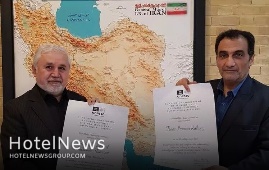
Certificates of registration of four Iranian UNESCO World Heritage sites have been handed over to the tourism ministry, the deputy tourism minister has announced. The Ministry of Cultural Heritage, Tourism, and Handicrafts has received registration certificates of four cultural heritage, which have been listed by UNESCO over the last two years, IRNA quoted Ali Darabi as saying on Friday. The ministry has received certificates for Trans-Iranian Railway, Cultural Landscape of Uramanat as tangible cultural heritages as well as the art of miniature, jointly with Azerbaijan, Turkey, and Uzbekistan and pilgrimage to St. Thaddeus jointly with Armenia, as UNESCO Intangible Cultural Heritage, the official added. Having a global register of tangible and intangible heritage is vital because these works, regardless of race, nationality, and religion, belong to all human society, and all governments and nations have a duty to preserve and protect them, even during times of war, he noted. Increased recognition of a country’s cultural heritage on the World Heritage list certainly contributes to the development of the tourism industry and businesses related to it, and most importantly, introduces the culture and civilization of a nation to the world, he explained. With 26 World Heritage Sites, Iran ranks 10th in the world in terms of the number of historical monuments and sites registered on the UNESCO World Heritage list. Before the Islamic Revolution, Persepolis, Naghsh-e Jahan Square, and Choghaznabil were the only three UNESCO-listed monuments, but today the number has been increased this number to 26 historical sites. Trans-Iranian Railway The railway can be regarded as a turning point for comprehensive developments in Iran. These developments include a wide spectrum of various economical, commercial, social, cultural, and even political aspects in a sensitive and important period of contemporary world history. Consequently, the 1394 kilometers long Trans-Iranian Railway was built with a width of 1435mm and 90 working stations along its route. It starts at a point north of Torkaman port located southeast of the Caspian Sea. After going through Sari and Qaem-Shahr cities, the railway enters the mountainous region of Alborz through the high Firooz-kooh Pass which is linked with Tehran and Varamin Plain by numerous bridges and tunnels. Further on after crossing the flatlands of Qom and Arak, the Trans-Iranian Railway penetrates Zagros highlands in Lorestan Province and passing through a large number of tunnels and bridges reaches Andimeshk situated in the low Kuzestan Plain. Finally extending to the vicinity of Dezful, Ahwaz, and its grand bridge on Karoon, the Trans-Iranian Railway is divided into two branches ending separately at Khoram-Shahr and Imam-Khomeini ports on the Persian Gulf. Cultural Landscape of Uramanat Stretched on the slopes of Sarvabad county, and shared between the provinces of Kordestan and Kermanshah, the rural area of Uramanat embraces dense and step-like rows of houses in a way that the roof of each house forms the yard of the upper one, a feature that adds to its charm and attractiveness. As the cultural landscape covers 300 villages and in terms of architecture and landscape, it is one of the most beautiful and presentable heritages in the world. Uraman is considered a cradle of Kurdish art and culture from the days of yore. Pirshalyar, which is named after a legendary local figure, is amongst time-honored celebrations and rituals that are practiced annually across the region. The art of miniature The miniature is a type of two-dimensional artwork that involves the design and creation of small paintings on books, paper-mâché, rugs, textiles, walls, ceramics, and other items using raw materials such as gold, silver, and various organic substances. Historically, the miniature was exemplified by book painting in which the text was supported visually, but the element has evolved and can also be observed in architecture and as an adornment in public spaces. The miniature displays a specific type of perspective in which the size of the figures changes according to their importance - a key difference between realistic and naturalistic styles. Though it has existed for centuries, it continues to develop and thus strengthens the bonds between past and present. Traditional painting principles and techniques are preserved, but artists also bring individual creativity into the process. Pilgrimage to the St. Thaddeus The annual three-day pilgrimage to St. Thaddeus Apostle Monastery in northwestern Iran is held each July. The pilgrimage venerates two prominent saints: St. Thaddeus, one of the first apostles preaching Christianity, and St. Santukhd, the first female Christian martyr. The bearers of the element are the Armenian population in Iran, Iranian-Armenians residing in Armenia, and followers of the Armenian Apostolic Church. Pilgrims gather in Tabriz before departing for the monastery. They cover 700 kilometers from Yerevan to the monastery annually. The commemoration ceremony includes special liturgies, processions, prayers, and fasting. It culminates in a Holy Mass with Holy Communion. Special times are set aside for traditional Armenian folk performances and Armenian dishes are served. The pilgrimage is the primary social and cultural event of the year.
Create: Oct 10, 2021 Edit: Oct 10, 2021 Regional News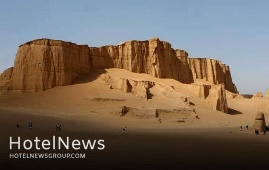
A clean-up project has recently been completed on Shahdad, part of the UNESCO-registered Lut desert, a local tourism official has announced. The project was carried out in collaboration with some eco-lodge owners nearby on the occasion of National Tourism Week (September 27-October 4), Hojjat Ebrahimizadeh said on Saturday. The project involved cleaning and collecting garbage left by some tourists in this area, the official added. Shahdad Desert receives a large number of tourists each year, making it imperative to adhere to hygienic principles so they can continue to enjoy its beautiful nature, he noted. Tourists are hence advised to collect their garbage from the region before they leave, he explained. Situated in southeastern Kerman province, Shahdad is home to shifting sands, salt plains, meteorite fields, and rocky terrain, which offers visitors breathtaking vistas and unparalleled serenity of the intact nature and wilderness. It has long been a destination for adventurers, nature lovers, off-roaders, and trekkers. The Lut Desert, widely referred to as Dasht-e Lut (“Emptiness Plain”), is a large salt desert encircled by the provinces of Kerman and Sistan- Baluchestan, and South Khorasan. It is the world’s 27th-largest desert and was inscribed on UNESCO’s World Heritage List on July 17, 2016. Seven years of satellite temperature data analyzed by NASA show that the Lut Desert is the hottest spot on Earth. Based on the research, it was the hottest during 5 of the 7 years and had the highest temperature overall: 70.7°C in 2005. The desert is also considered one of the top areas in the world for finding meteorites, thanks to its unique parameters. In recent years, significant finds have been made, with the efforts of national and international teams of researchers.
Create: Oct 9, 2021 Edit: Oct 9, 2021 Regional News
Iran is prepared to repair and restore Syrian historical monuments and tourism infrastructure that have been destroyed by the Islamic State in Iraq and Syria (ISIS), the deputy tourism minister Ali-Asghar Shalbafian has announced. He made the remarks during a meeting with the Syrian Minister of Economy and Foreign Trade Mohammad Samer al-Khalil on Sunday in the Expo 2020 Dubai. “The Iranian restorers can then exchange experiences with Syrian specialists,” the official added. He also emphasized Iran’s readiness to strengthen communication and develop tourism ties between the two countries. Health tourism and medical tourism is one of Iran's most important strengths in the tourism sector, and we welcome Syrian tourists to make use of this opportunity,” he noted. Al-Khalil for his part said that there is an increasing interest among Syrian tourists in visiting Iran, especially its northern coasts, as well as to Iranian holy cities, so the necessary grounds need to be created. The Expo 2020 Dubai opened on Thursday with a lavish ceremony of fireworks, music, and messaging about the power of global collaboration for a more sustainable future. Iran’s pavilion in the world fair is planned to showcase each Iranian province’s strengths and assets in tourism, cultural heritage, handicrafts, as well as its natural sites, traditional ceremonial practices, and historical significance. Many countries and companies are also looking to the expo - the first major global event open to visitors since the coronavirus pandemic - to boost trade and investment. According to organizers, the Expo, an exhibition of culture, technology, and architecture under the banner “Connecting Minds and Creating the Future”, is expected to be a demonstration of ingenuity, and a place where global challenges such as climate change, conflict, and economic growth can be addressed together. The Persian Gulf state has relaxed most coronavirus limitations but Expo requires face masks to be worn and for visitors over 18 to be vaccinated against, or test negative for, COVID-19. Iran expects to reap a bonanza from its numerous tourist spots such as bazaars, museums, mosques, bridges, bathhouses, madrasas, mausoleums, churches, towers, and mansions, of which 26 being inscribed on the UNESCO World Heritage list.
Create: Oct 3, 2021 Edit: Oct 9, 2021 Regional News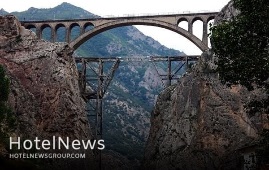
Trans-Iranian Railway that reaches a length of 1400 km has been declared a UNESCO World Heritage site. The UN body accepted Trans-Iranian Railway during the 44th session of the World Heritage Committee, which will be running through July 31 in China’s Fuzhou. The railway can be regarded as a turning point for comprehensive developments in Iran. These developments include a wide spectrum of various economical, commercial, social, cultural, and even political aspects in a sensitive and important period of contemporary world history. Under the Pahlavi regime, the process of moving towards modernism gained momentum and the railway became the main pedestal of development in Iran. Consequently, the 1394 kilometers long Trans-Iranian Railway was built with a width of 1435mm and 90 working stations along its route. It starts at a point north of Torkaman port located southeast of the Caspian Sea. After going through Sari and Qaem-Shahr cities, the railway enters the mountainous region of Alborz through the high Firooz-kooh Pass which is linked with Tehran and Varamin Plain by numerous bridges and tunnels. Further on after crossing the flatlands of Qom and Arak, the Trans-Iranian Railway penetrates Zagros highlands in Lorestan Province and passing through a large number of tunnels and bridges reaches Andimeshk situated in the low Kuzestan Plain. Finally extending to the vicinity of Dezful, Ahwaz, and its grand bridge on Karoon, the Trans-Iranian Railway is divided into two branches ending separately at Khoram-Shahr and Imam-Khomeini ports on the Persian Gulf.
Create: Jul 28, 2021 Edit: Jul 28, 2021 Regional News
St. Regis Hotels & Resorts today announced the opening of The St. Regis Bermuda Resort. Extending the legacy of St. Regis from New York’s finest address of 55th and Fifth, the resort blends the timelessness of a bygone era with avant-garde Bermudian design and cultural influences. Situated in the historic Town of St. George’s, an UNESCO World Heritage site, and nestled among the soft sands and turquoise water of St. Catherine’s Beach, the resort is the first Marriott International luxury brand property to debut on the island. Drawing upon the celebrated spirit of leisure travel, The St. Regis Bermuda Resort seamlessly brings together elegant accommodations, exceptional amenities, and the brand’s signature Butler Service to create an enchanted island escape. “Bermuda has long served as an exclusive destination for the global luminaries, making it the ideal location to debut a glamorous new St. Regis resort. Much like the island, St. Regis is steeped in rich history, offering a storied past and exciting future,” said George Fleck, Vice President and Global Brand Leader for St. Regis Hotels & Resorts. “The St. Regis brand’s founding family, the Astors, spent time on this beautiful island more than a century ago. Now, the House of Astor’s celebrated traditions and rituals will bring this visionary spirit, avant-garde style and impeccable service back to Bermuda where our address is your muse.” Spanning St. Catherine’s Beach in a gentle arc, the OBMI designed architecture and interiors of The St. Regis Bermuda Resort draw inspiration from the destination’s notable local geography, heritage and traditions, beautifully weaving the island’s legacy together with the glamourous spirit and sophistication of St. Regis. The resort features 120 elegant guestrooms, including 21suites and an ultra-luxury residential development offering two and three-bedroom residences. Each guestroom features a private balcony and is designed to immediately draw the eye to expansive ocean views and stunning vistas of Bermuda’s celebrated Fort St. Catherine. Speaking to the island’s bold fortitude, stone foundations and formations inform texture and patterns, while the purposeful irreverence of Bermuda’s fashion is brought in through saturated colors and striking geometry. The St. Regis Bermuda Resort promises to be an enchanted beachfront oasis for guests and local luminaries alike,” said Jan Vanhaelewyn, General Manager at The St. Regis Bermuda Resort. “With bespoke service, exquisite design, outstanding culinary venues, the historic Five Forts Golf Course, and more than a dash of glamour, we hope to inspire and contribute to the local hospitality landscape and help elevate luxury in this iconic leisure destination.” The resort’s sophisticated food and beverage offerings include Lina, a flavorful all-day restaurant whose name is a playful nod to the nickname of St. Regis’ founding patroness Mrs. Caroline Astor. This venue features a delectable, light and fresh menu that leans into Bermuda’s coastal offerings and is inspired by the irreverent glamour of yachting clubs of the past. In the evening, the signature blackboards of famed BLT Steak NY will share daily specials, offering guests the finest in modern steakhouse fare. At the iconic St. Regis Bar, guests can socialize and celebrate while enjoying champagne, libations and light bites. The resort will also debut the Gates Bay Mary, its unique twist on the brand’s signature cocktail – the Bloody Mary. The Gates Bay Mary is named for the turquoise bay bordering the resort and infuses native fennel, Goslings Gold Seal Rum, Outerbridge’s Original Sherry Peppers Sauce, and a special spice mix created on the island Overlooking azure waters, the resort features both an adult and a family pool where guests can lounge luxuriantly or enjoy a private cabana for an exclusive retreat. Indulgence and relaxation awaits at the St. Regis Spa, which offers a comprehensive menu of unique personalized treatments using natural and precious elements and featuring products by Sothys. Additionally, a 24-hour fitness center offers state-of-the-art equipment. Younger guests will be able to enjoy unique amenities and enriching activities at The St. Regis Children’s Club, while Family Traditions programming offers meaningful excursions and experiences for the whole family. True to the Astors love for sports and speed, both guests and locals can relax with a day on the links or a night at the casino. Breathing new life into a historic landmark, the scenic Five Forts Golf Course is a marvelous and challenging 18-hole course. Named for the five notable forts that surround it, leisure seekers will tee off near Fort Victoria and enjoy captivating ocean views as they make their way through the 4,436-yard course, concluding at Fort St. Catherine. State-of-the-art, GPS-enabled golf carts will ensure the brand’s bespoke service reaches guests no matter where they are on the green. For a dazzling evening of sophistication and glamour, the resort proudly features the St. Regis brand’s first casino, slated to open later this year. This 5,500 sq. ft. gaming floor offers a variety of options for guests looking to roll the dice, in addition to a salon privé with two private tables. As the finest address for truly bespoke events and celebrations, the resort also features 10,989 sq. ft. of event space. Perfect for executive retreats, family gatherings, or enjoying milestone moments, offerings include a state-of-the-art boardroom, an exceptional ballroom that can host up to 150 people and a stunning terrace for oceanside events. The resort can also create a personalized, private set up on the beach while an additional event lawn located at the 18th hole of the Five Forts Golf Course offers spectacular sunset views overlooking both the ocean and Fort St. Catherine. Informed by the brand’s legacy of celebration from the Gilded Age to the present day, each event at The St. Regis Bermuda is thoughtfully curated and complemented with exceptional service.
Create: May 25, 2021 Edit: May 25, 2021 International News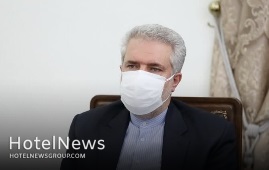
Iran has the potential to become a destination for vaccine tourism regarding considerable efforts the country is making to develop series of domestic COVID-19 vaccines, the tourism minister Ali-Asghar Mounesan has said. There is a capacity to add ‘vaccine tourism’ to the ‘health tourism basket’ of the country after all [Iranian] people are received vaccines…. and the move could fuel a boom in the tourism sector of the country.” In the near future, we will possess the capacity to provide foreigner travelers with the COVID-19 vaccine, especially those from the neighboring countries,” Mounesan said. The Islamic Republic is among the first countries which started developing a vaccine against coronavirus, and now four companies are endeavoring to release their products by September and inoculate the whole population. Out of 16 vaccine production cases, four cases have received a code of ethics and are undergoing clinical trial; it is hoped that another three to four cases will succeed in receiving license by September. According to available data compiled by the tourism ministry, the number of foreign visitors to Iran plunged 94% in the first nine months of the past Iranian calendar year (ended March 20, 2021) as the coronavirus pandemic takes a heavy toll on the tourism industry. The coronavirus epidemic has ruined more than 1.5 million jobs in Iran’s travel sector, tourism minister Ali-Asghar Mounesan said in December. “Over 1.5 million jobs have been lost in the tourism sector of Iran due to the COVID-19 disease…. Many of the tourism-insiders are now unemployed or they are staying at home,” according to Mounesan. Tourism [industry of Iran] was growing before the corona [outbreak], its revenues reached $11.7 billion in 2019, which accounted for 2.8% of GDP, near the average share of tourism in the world GDP, which was 3.2 percent, the minister explained. The ancient land embraces hundreds of historical sites such as bazaars, museums, mosques, bridges, bathhouses, madrasas, mausoleums, churches, towers, and mansions, of which 24 being inscribed on the UNESCO World Heritage list. Under the 2025 Tourism Vision Plan, the country aims to increase the number of tourist arrivals from 4.8 million in 2014 to 20 million in 2025.
Create: May 24, 2021 Edit: May 25, 2021 Regional News
Iran is weighing plans to open its borders to vaccinated tourists though it isn’t yet clear exactly when tourists will be allowed to arrive. The Ministry of Cultural Heritage, Tourism, and Handicrafts have already started extensive consultations with other government ministries for the reopening of borders to vaccinated travelers, the deputy minister Vali Teymouri said on Wednesday. “One of the issues that we are pursuing strongly through various committees is the arrival of international citizens who have been vaccinated so that won’t pose a threat or concern to the Iranian society,” the official said. “We have put forward the proposal to the Ministry of Foreign Affairs, the Ministry of Health, and to the President (Hassan Rouhani) as well.” He went on to say that other countries are planning to open borders to vaccinated tourists. “We estimate that soon, various tourist destinations in the world, including the European Union, will open their doors to international tourists implementing a vaccine-passport approach….” Earlier in March, the Head of the Iranian Tour Operators Association Ebrahim Pourfaraj asked the government to issue tourist visas for the international applicants who have been fully vaccinated against COVID-19. “The Ministry of Health and the National Headquarters for Coronavirus Control can at least agree that the international tourists who have received the [second dose of] coronavirus vaccine would be allowed to enter Iran,” Pourfaraj said. He also lamented that the continuation of such a trend would result in losing international tourist markets more than before. “Or at least they should make it clear so that we can respond appropriately to foreign companies and tourists to not to miss the international tourist markets more than before,” he said. According to available data compiled by the tourism ministry, the number of foreign visitors to Iran plunged 94% in the first nine months of the past Iranian calendar year (ended March 20, 2021) as the coronavirus pandemic takes a heavy toll on the tourism industry. “Some 450,000 foreign travelers arrived in Iran for mainly medical or trade purposes during the first nine months of the year… tightened measures to tackle the new coronavirus has reduced international travel to the country by 94 percent,” Teymouri said. The coronavirus epidemic has ruined more than 1.5 million jobs in Iran’s travel sector, tourism minister Ali-Asghar Mounesan said in December. “Over 1.5 million jobs have been lost in the tourism sector of Iran due to the COVID-19 disease…. Many of the tourism-insiders are now unemployed or they are staying at home,” Mounesan said. Smart and responsible traveling should replace “do not travel” recommendations, the minister stressed, adding: “In our country, Corona has caused problems in the tourism industry and the worrying point is the continuation of this trend.” Tourism [industry of Iran] was growing before the corona [outbreak], its revenues reached $11.7 billion in 2019, which accounted for 2.8% of GDP, near the average share of tourism in the world GDP, which was 3.2 percent, the minister explained. The ancient land embraces hundreds of historical sites such as bazaars, museums, mosques, bridges, bathhouses, madrasas, mausoleums, churches, towers, and mansions, of which 24 being inscribed on the UNESCO World Heritage list. Under the 2025 Tourism Vision Plan, the country aims to increase the number of tourist arrivals from 4.8 million in 2014 to 20 million in 2025.
Create: May 24, 2021 Edit: May 24, 2021 Regional News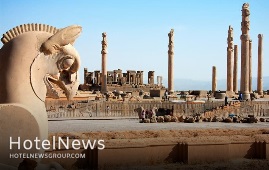
A host of experts will be discussing archaeological findings and the latest attempts for the conservation of the UNESCO-registered Persepolis for future generations. “In this webinar, experts and researchers in the fields of archaeology, conservation and restoration, archeology, linguistics, documentation, architecture and civil engineering, geology, biology, law, statistics, etc. will discuss and exchange views on the ancient Persepolis during a four-day international webinar, which starts on Sunday,” CHTN quoted the organizers as saying on Saturday. Archaeological achievements in the World Heritage site will be discussed on the first day of the conference while decades of conservation, restoration, documentation projects would be topics for the second day. On the third day, applied research on conservation and restoration, documentation will be scrutinized. Moreover, comprehensive conservation plans for the architecture and conservation of the site are set to be conferred on the last day of the event. Persepolis, also known as Takht-e Jamshid, whose magnificent ruins rest at the foot of Kuh-e Rahmat (Mountain of Mercy) is situated 60 kilometers northeast of the city of Shiraz in Fars province. The ruined royal city ranks among the archaeological sites which have no equivalent, considering its unique architecture, urban planning, construction technology, and art. Persepolis was burnt by Alexander the Great in 330 BC apparently as revenge to the Persians because it seems the Persian King Xerxes had burnt the Greek City of Athens around 150 years earlier. The city’s immense terrace was begun about 518 BC by Darius the Great, the Achaemenid Empire’s king. On this terrace, successive kings erected a series of architecturally stunning palatial buildings, among them the massive Apadana palace and the Throne Hall (“Hundred-Column Hall”). This 13-ha ensemble of majestic approaches, monumental stairways, throne rooms (Apadana), reception rooms, and dependencies is classified among the world’s greatest archaeological sites. The site is marked by a large terrace with its east side abutting the Kuh-e Rahmat (“Mount of Mercy”). The other three sides are formed by a retaining wall, varying in height with the slope of the ground from 13 to 41 feet (4 to 12 meters); on the west side, a magnificent double stair in two flights of 111 short stone steps leads to the top. On the terrace are the ruins of several colossal buildings, all constructed of a dark gray stone (often polished to a marble-like surface) from the adjacent mountain. According to Britannica, the stone was cut with the utmost precision into blocks of great size, which were laid without mortar; many of them are still in place. Especially striking are the huge columns, 13 of which still stand in the audience hall of Darius I (the Great; reigned 522–486 BC), known as the Apadana, the name given to a similar hall built by Darius at Susa. There are two more columns still standing in the entrance hall of the Gate of Xerxes, and a third has been assembled there from its broken pieces. In 1933 two sets of gold and silver plates recording in the three forms of cuneiform—ancient Persian, Elamite, and Babylonian—the boundaries of the Persian empire were discovered in the foundations of Darius’s hall of audience. Several inscriptions, cut in stone, of Darius I, Xerxes I, and Artaxerxes III indicate to which monarch the various buildings were attributed.
Create: May 16, 2021 Edit: May 16, 2021 Regional News
